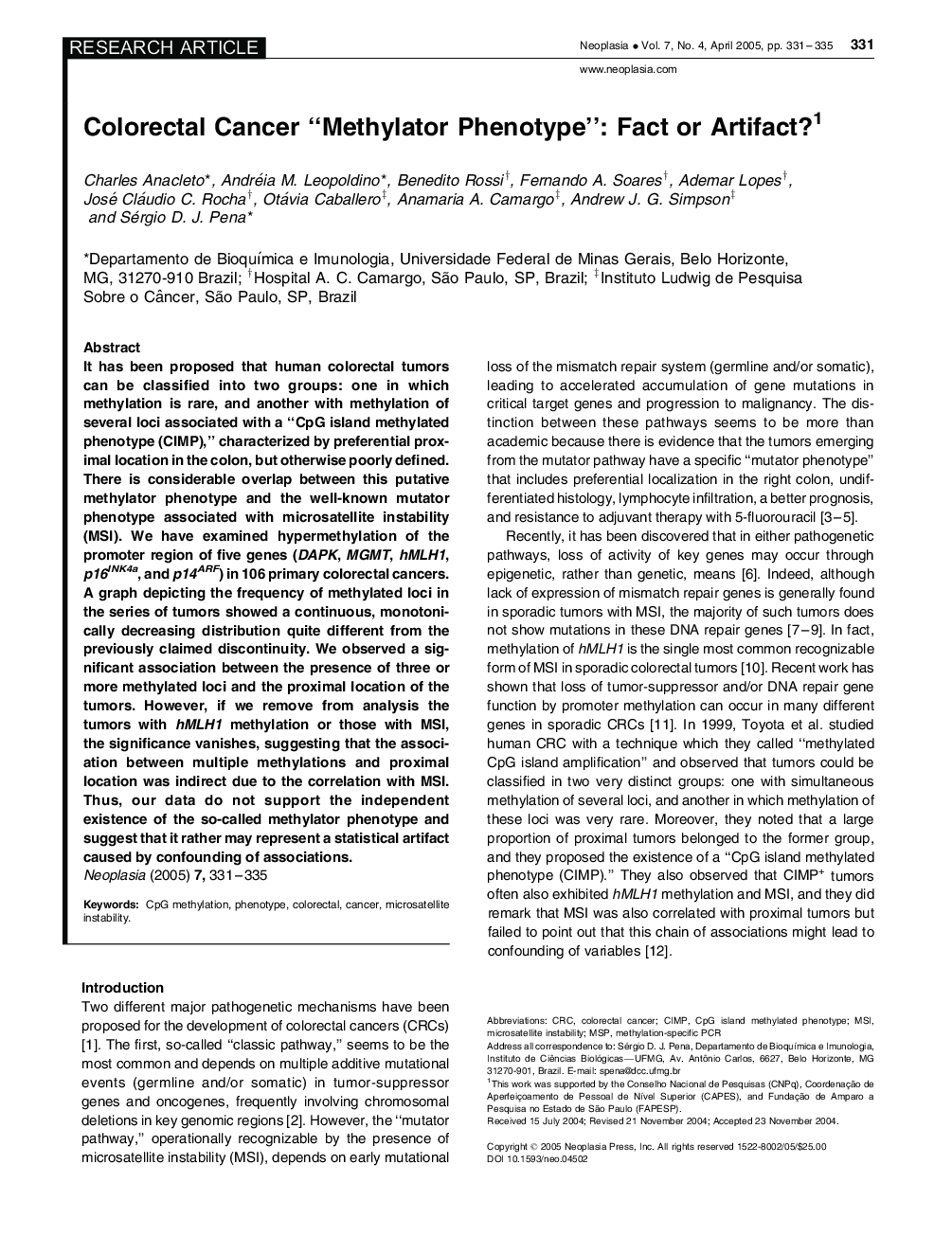| Article ID | Journal | Published Year | Pages | File Type |
|---|---|---|---|---|
| 10915469 | Neoplasia | 2005 | 5 Pages |
Abstract
It has been proposed that human colorectal tumors can be classified into two groups: one in which methylation is rare, and another with methylation of several loci associated with a "CpG island methylated phenotype (CIMP)," characterized by preferential proximal location in the colon, but otherwise poorly defined. There is considerable overlap between this putative methylator phenotype and the well-known mutator phenotype associated with microsatellite instability (MSI). We have examined hypermethylation of the promoter region of five genes (DAPK, MGMT, hMLH1, p16INK4a, and p14ARF) in 106 primary colorectal cancers. A graph depicting the frequency of methylated loci in the series of tumors showed a continuous, monotonically decreasing distribution quite different from the previously claimed discontinuity. We observed a significant association between the presence of three or more methylated loci and the proximal location of the tumors. However, if we remove from analysis the tumors with hMLH1 methylation or those with MSI, the significance vanishes, suggesting that the association between multiple methylations and proximal location was indirect due to the correlation with MSI. Thus, our data do not support the independent existence of the so-called methylator phenotype and suggest that it rather may represent a statistical artifact caused by confounding of associations.
Keywords
Related Topics
Life Sciences
Biochemistry, Genetics and Molecular Biology
Cancer Research
Authors
Charles Anacleto, Andréia M. Leopoldino, Benedito Rossi, Fernando A. Soares, Ademar Lopes, José Cláudio C. Rocha, Otávia Caballero, Anamaria A. Camargo, Andrew J.G. Simpson, Sérgio D.J. Pena,
